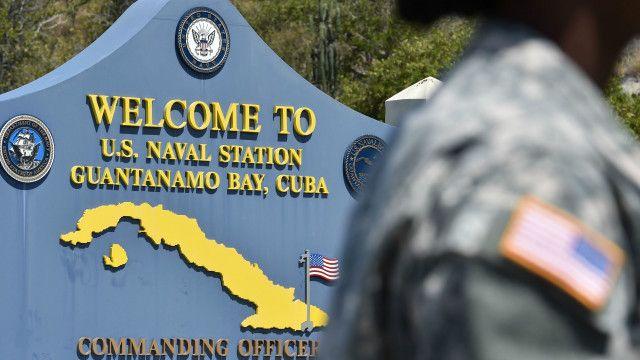Thus, 120 years ago, the Estrada Palma government ceded an area of 117.6 square kilometers of the national territory for the Guantanamo Naval Base, which has remained occupied ever since against the will of the Cuban people.
The interference Agreement for the Coal and Naval Stations arose from the imposition of a constitutional amendment for Cuba, approved by the U.S. Congress and signed by President William McKinley in March 1901, which became known as the Platt Amendment, while the Cuban territory was occupied by the Cuban army.
The Platt Amendment was an eight-article appendix to the Army Budget Bill, approved by the U.S. Congress and imposed on the first Constitution of the Republic of Cuba, drafted by the Constituent Assembly of 1901, under the threat that Cuba would continue to be militarily occupied if it was not accepted.
Article 7 of this Amendment established the cession of portions of Cuban soil to locate U.S. naval stations “to enable the United States to maintain the Independence of Cuba and to protect the people thereof, as well as for their own defense.”
Even more insulting was Article 3, which “granted the United States the right to intervene militarily in the Island when life, property or individual liberties were endangered (in its judgment)”.
The Amendment also warned the Government of Cuba that “the United States may exercise the right to intervene for the preservation of Cuban Independence, the maintenance of a Government adequate for the protection of lives, property and individual liberty and to fulfill the obligations which, with respect to Cuba, have been imposed on the United States by the Treaty of Paris, and which must now be assumed and fulfilled by the Government of Cuba.”
Also, in Article 6, they took advantage of the geographical error in the Treaty of Paris of referring to Cuba as an island and not an archipelago, to provide that the status of the Isla de Pinos (present-day Isla de la Juventud) would be determined in a future agreement with the United States.
Estrada Palma, after Martí’s death in the field, remained as Delegate of the Cuban Revolutionary Party (PRC), and was appointed agent abroad of the Republic in Arms in the Assembly of Jimaguayú.
He remained in the United States until long after the occupation of the island by the U.S. Army. During this period, one of his few public actions was the unilateral, irresponsible and unconsulted decision to dissolve the PRC in December 1898, when he considered that the objectives that gave rise to its creation had been fulfilled.
In open intelligence with the Americans during the occupation, Estrada Palma recommended to General in Chief Máximo Gómez the immediate dissolution of the Liberation Army without monetary compensation, and told him that his efforts to obtain the recognition of the military’s salary before President McKinley had been useless.
He suggested that the Mambises (independence fighters) be employed as laborers in the sugar mills, a solution for which he was already in negotiations with the landowners of Cuba.
Máximo Gómez flatly refused to disband the Independence Army without monetary compensation, and replied in a letter: “Reasons of public order, of high politics, of morality, made me decide to oppose and continue to oppose that our soldiers, who have been giving so much proof of abnegation, return to their destroyed homes, to their barren fields, without a penny in their pockets (…)”.
With the approval of the United States, Estrada Palma became a candidate to the first Cuban elections and won them, elections in which his only opponent was Major General of the Cuban Liberation Army and last president of the Republic in Arms, Bartolomé Masó, who finally withdrew due to the lack of electoral guarantees.
Tomás Estrada Palma was president of the Republic of Cuba from 1902 to 1906, being elected in the first elections held under American supervision. He governed with extreme austerity, but with absolute servility towards the interests of the U.S. Government.
Near the end of his term, he decided to seek reelection, for which he used the force of power and fraud, which motivated the followers of the opposition Liberal Party to take up arms. When he realized that the popular revolt threatened to overthrow him from power, he preferred to ask the U.S. government for military intervention. Shortly thereafter, he resigned from the Presidency to facilitate the handover of the country’s destiny to the United States, which occupied Cuba for the second time.
The return of the land occupied by the U.S. Naval Base in Guantanamo has been a permanent demand of the Cuban Revolution since 1959. It has the support of the Cuban people and the international community. It is a thorn in the heart of the homeland.
 Escambray ENGLISH EDITION
Escambray ENGLISH EDITION





Escambray reserves the right to publish comments.